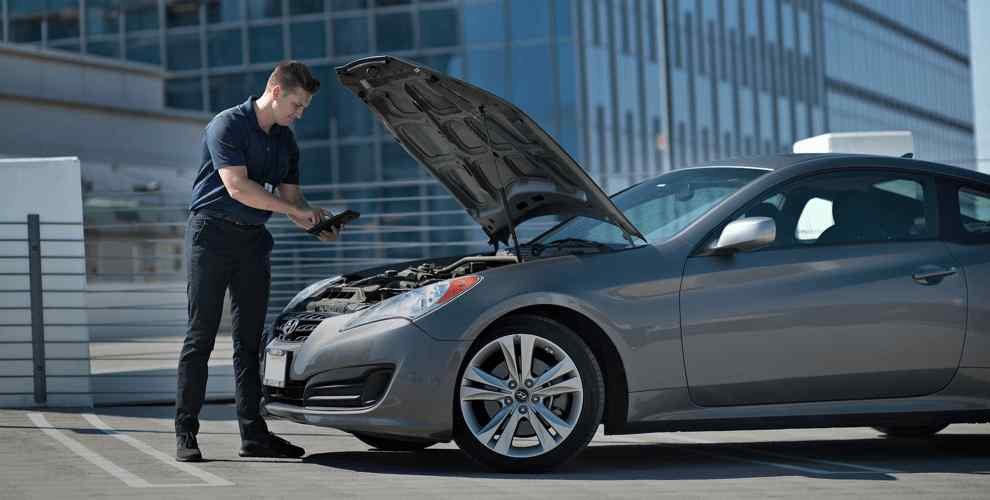Vehicle Stability Assist (VSA) system, a safety technology integrated into many Honda vehicles to enhance driver control and stability. This advanced system helps prevent skidding and maintain traction during challenging driving conditions, such as sharp turns, slippery roads, or sudden maneuvers. VSA works by monitoring critical aspects like wheel speed, steering input, and lateral forces. If it detects a loss of stability, it automatically reduces engine power and applies braking to individual wheels to restore control.
By preventing oversteering or understeering, VSA significantly improves vehicle handling and safety, especially in adverse weather conditions. It is particularly beneficial for drivers navigating wet, icy, or uneven terrains. Honda designed the VSA system to work seamlessly, ensuring the vehicle remains stable without requiring manual intervention. This feature is a hallmark of Honda’s commitment to innovation and passenger safety.
Importance of VSA for Drivers
Where road conditions can vary significantly, VSA plays a Important role. It ensures that your vehicle remains stable and responsive, reducing the likelihood of skidding or losing control, especially in adverse weather conditions or during sudden maneuvers.
What is VSA?
Vehicle Stability Assist (VSA) is Honda’s proprietary stability control system. It is designed to help drivers maintain control of their vehicle in situations where they might otherwise lose it, such as during sharp turns or slippery road conditions.
History and Evolution
VSA was introduced by Honda in the early 2000s as part of its commitment to enhancing vehicle safety. Over the years, the system has undergone several upgrades to improve its effectiveness and integrate with other advanced safety technologies.
How VSA Works
The Technology Behind VSA
VSA utilizes a combination of sensors and electronic control systems to monitor and adjust vehicle behavior. It continuously evaluates data from sensors that track wheel speed, steering angle, and lateral G-forces. If the system detects a loss of traction or stability, it intervenes by adjusting engine power and applying brake force to individual wheels.
Key Components Involved
Yaw Rate Sensor: Measures the vehicle’s rotation around its vertical axis.
Steering Angle Sensor: Monitors the direction the driver intends to go.
Wheel Speed Sensors: Track the speed of each wheel to detect any discrepancies.
Brake Control Unit: Applies braking force to specific wheels as needed.
Benefits of VSA
Enhanced Safety
VSA significantly enhances vehicle safety by helping prevent skidding and loss of control. It is especially useful in slippery conditions, such as ice or rain, where maintaining traction can be challenging.
Improved Handling
By providing additional control during cornering and sudden maneuvers, VSA improves overall vehicle handling. This ensures a more confident driving experience, even in less-than-ideal conditions.
Stability in Adverse Conditions
Whether you’re driving on wet roads, icy patches, or uneven terrain, VSA helps maintain vehicle stability. It acts as a safety net, giving you more control over your vehicle’s movement.
How to Activate and Deactivate VSA
Steps to Activate VSA
In most Honda vehicles, VSA is activated automatically when the engine starts. However, if it has been manually turned off, you can usually reactivate it by pressing the VSA button on the dashboard.
How to Turn Off VSA
Turning off VSA can be done by pressing the VSA button, often located on the dashboard or near the gear shift. This may be necessary in specific off-road situations where VSA might interfere with vehicle performance.
When to Consider Turning It Off
While VSA is beneficial for most driving scenarios, there might be instances where turning it off is useful, such as when driving through deep snow or sand. Always remember to turn it back on when returning to normal driving conditions.
Common Issues and Troubleshooting
Typical VSA Problems
Common issues with VSA include the warning light illuminating on the dashboard or the system not engaging correctly. These problems might stem from faulty sensors or a malfunctioning control unit.
How to Diagnose VSA Issues
If you experience problems with VSA, the first step is to check the warning light. Consult your vehicle’s owner manual or visit a Honda service center for a thorough diagnosis.
What to Do if VSA Warning Light Comes On
If the VSA warning light comes on, it could indicate a problem with the system. It’s essential to have your vehicle inspected by a professional to ensure that the VSA system is functioning correctly.
VSA vs. Other Stability Control Systems
Comparison with ABS
While both VSA and ABS (Anti-lock Braking System) enhance vehicle safety, they serve different purposes. ABS prevents wheel lock-up during braking, while VSA helps maintain vehicle stability by adjusting engine power and braking individual wheels.
VSA vs. ESC (Electronic Stability Control)
ESC is a broader system that includes VSA. While VSA is specific to Honda, ESC is a more general term used across various manufacturers. Both systems aim to improve vehicle stability and safety.
VSA in Different Honda Models
VSA Features in the Honda Civic
In the Honda Civic, VSA is standard across most trims, providing enhanced stability and safety for everyday driving.
VSA in the Honda Accord
The Honda Accord features VSA in its higher trims, offering drivers advanced stability control and improved handling.
VSA in the Honda CR-V
The Honda CR-V, a popular SUV, includes VSA to ensure stability and safety, particularly useful for its larger size and varying road conditions.
Maintaining Your VSA System
Regular Checks and Maintenance
To ensure your VSA system remains effective, regular maintenance checks are crucial. This includes inspecting sensors and ensuring the system is functioning correctly.
Recommended Services
Schedule routine service appointments with your Honda dealer to keep your VSA system in top condition. They can perform diagnostics and address any issues before they become serious problems.
Future of VSA Technology
Innovations on the Horizon
As technology advances, VSA systems are expected to become more sophisticated, integrating with other vehicle safety features and enhancing overall driving experience.
How VSA Will Evolve
Future VSA systems may incorporate more advanced sensors and artificial intelligence to provide even greater stability and safety on the road.
Conclusion
Recap of VSA’s Importance
VSA is a crucial component of modern Honda vehicles, providing enhanced safety, improved handling, and stability under various driving conditions. Understanding how it works and how to maintain it can significantly benefit your driving experience.
Final Thoughts on Driving with VSA
Embracing VSA technology not only improves your vehicle’s performance but also contributes to a safer driving environment. Make sure to utilize and maintain this feature for the best driving experience.
FAQs
What does VSA stand for in Honda vehicles?
VSA stands for Vehicle Stability Assist. It’s a system designed to enhance vehicle stability and safety.
Can VSA be turned off permanently?
No, VSA cannot be turned off permanently. It can be deactivated temporarily using a button, but it should be reactivated when normal driving conditions resume.
Why is my VSA warning light on?
The VSA warning light indicates a problem with the system. It’s advisable to have your vehicle checked by a professional to diagnose and fix any issues.
How does VSA improve driving safety?
VSA improves driving safety by helping to maintain vehicle stability during sharp turns or slippery conditions, reducing the risk of skidding or losing control.
Which Honda models come with VSA?
Most recent Honda models, including the Civic, Accord, and CR-V, come equipped with VSA as a standard or available feature.



